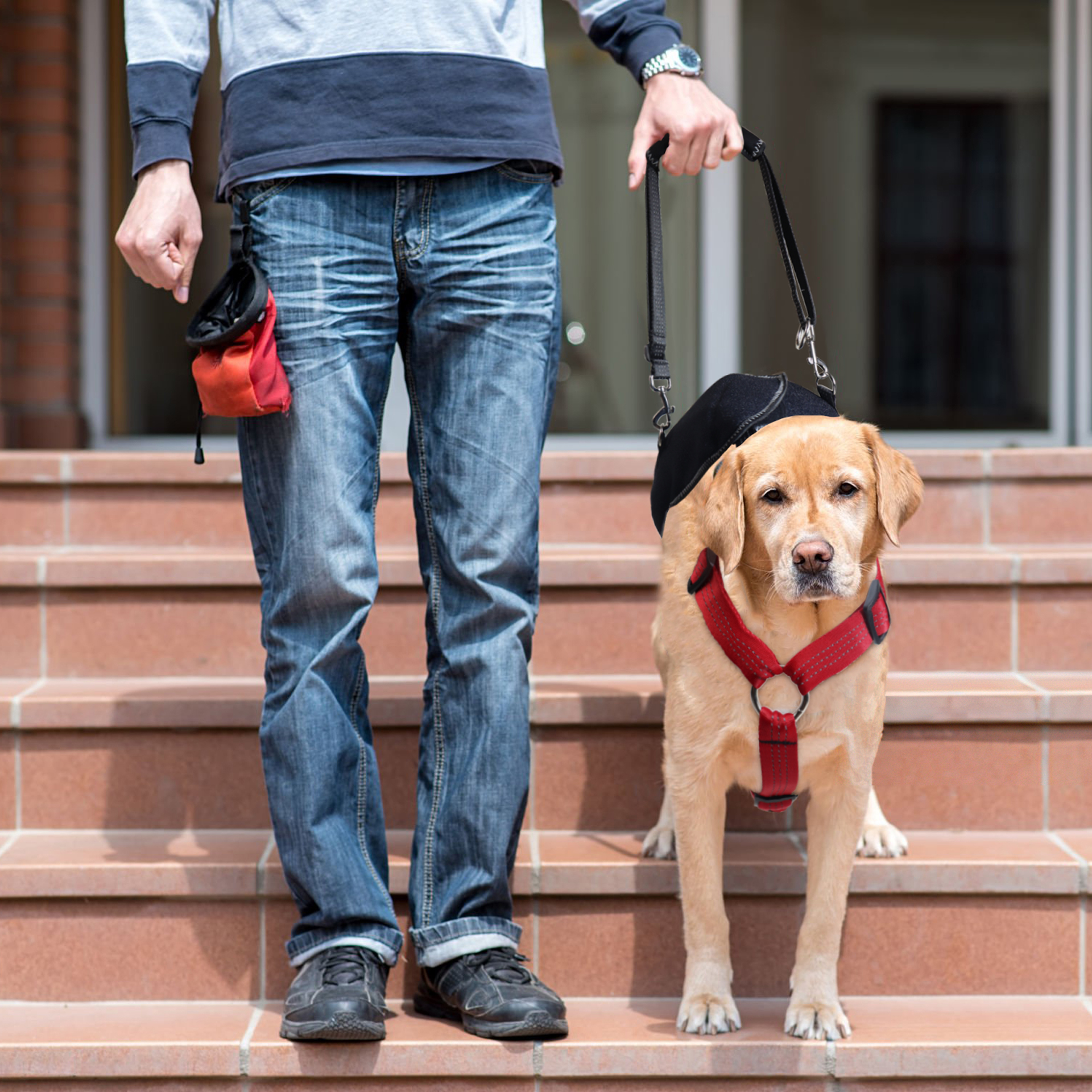Anterior cruciate ligament (ACL) tears in dogs, often referred to as cranial cruciate ligament (CCL) tears, are one of the most common orthopedic injuries affecting our canine companions. This injury can cause severe pain and reduced mobility, which can lead to a decreased quality of life. When pet owners seek the best way to help their dogs recover, one option that often comes to mind is the use of a hip dysplasia harness for dogs. But are braces effective for ACL tears in dogs?
Understanding ACL Injuries in Dogs
The ACL, or CCL in veterinary terms, is an important ligament in the knee that helps stabilize the joint. When this ligament tears, it can cause instability, pain, and lameness.
Dogs with ACL tears often display the following symptoms:
- Sudden lameness in one leg
- Difficulty standing, walking, or running
- Swelling around the knee joint
- Reluctance to bear weight on the affected leg
Traditional Treatment Options
Traditional methods of treating ACL tears in dogs often include surgical intervention. The two most common surgical procedures are:
- Tibial plateau leveling osteotomy (TPLO): This surgery changes the dynamics of the knee joint so that the ligaments have less need for stability.
- Tibial tuberosity advancement (TTA): This surgery changes the angle of the knee to reduce the demand on the ACL. While these surgeries can be very effective, they are also expensive and require a significant amount of recovery time. Not all dogs are suitable candidates for surgery due to factors such as age, overall health, or financial constraints of the owner. At this time, a dog hip dysplasia brace is considered as an alternative or adjunct treatment.
How a brace works
A brace for dogs with an ACL tear is designed to provide external support to the knee joint. Here’s how it works:
- Stabilize the joint: By reducing abnormal movement of the knee, the brace helps relieve pain and prevent further damage.
- Promote healing: The brace can create a more stable environment, promoting the natural healing of the ligament.
- Maintain muscle mass: By allowing the dog to continue to use the leg, the brace helps prevent muscle atrophy.
- Reduce inflammation: The pressure provided by the brace helps reduce swelling and inflammation.
Effectiveness of a brace
For dogs with an ACL tear, the effectiveness of a brace can vary based on a number of factors, including the severity of the tear, the size and weight of the dog, and overall health. Similarly, the effectiveness of a hip brace for dogs with hip dysplasia can also vary depending on these factors. Here are some considerations:
- Nonsurgical options: For dogs who can’t undergo surgery, braces offer a viable alternative to manage pain and improve mobility. Many pet owners report positive results from using a brace, especially when combined with other treatments like physical therapy.
- Postoperative support: Braces can also be beneficial after surgery, providing extra support during recovery and helping to protect surgical repairs.
- Preventative measures: For dogs prone to ACL injuries, braces can be used preventively to provide extra support during activities that put stress on the knee joint.
Choosing the right brace
Choosing the right brace is crucial to ensure its effectiveness. Here are some tips:
- Consult your veterinarian: Always consult your veterinarian before deciding to use a brace. They can provide recommendations based on your dog’s specific situation.
- Proper sizing: The right brace is crucial. Look for options that can be adjusted to your dog’s size and shape.
- Quality materials: Choose a brace made of durable, high-quality materials that can withstand daily use.
- Comfort and ease of use: A brace should be easy to put on and take off, and it shouldn’t cause discomfort or restrict blood flow.
Conclusion
While braces cannot cure ACL tears in dogs, they can be a valuable tool in managing the condition, especially for dogs who are not good candidates for surgery or as a support mechanism during recovery. Braces can help stabilize the knee, relieve pain, and improve your dog's quality of life. Similarly, leg braces for dogs with hip dysplasia can provide support and alleviate discomfort, enhancing their mobility and overall well-being. However, it is important to work closely with your veterinarian to determine the treatment options that best suit your dog's specific needs.
By understanding the options available and making an informed decision, you can help your dog live a happier, more comfortable life, even with an ACL injury.



0 Comments